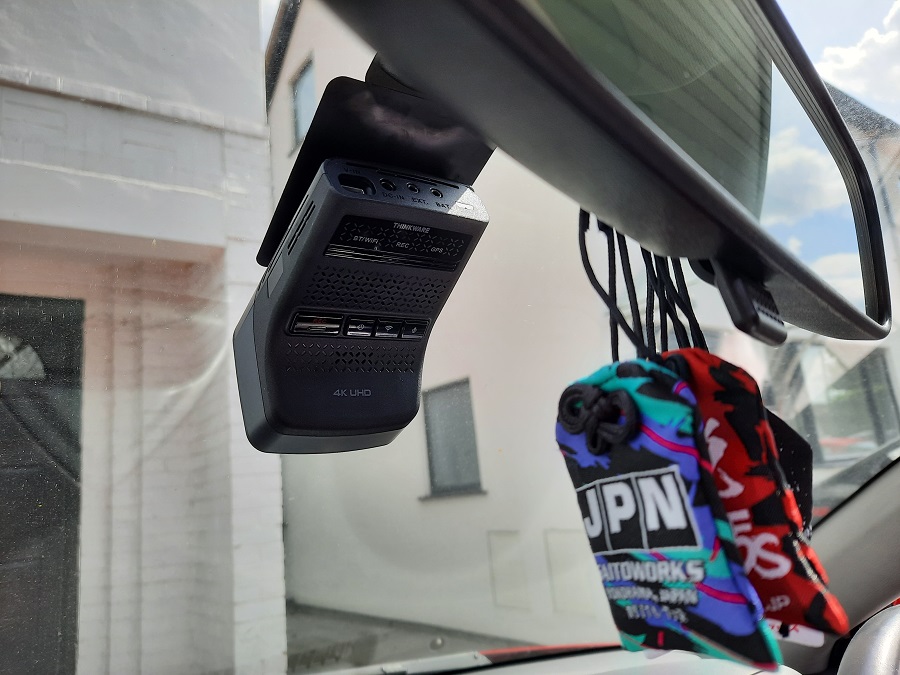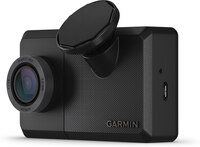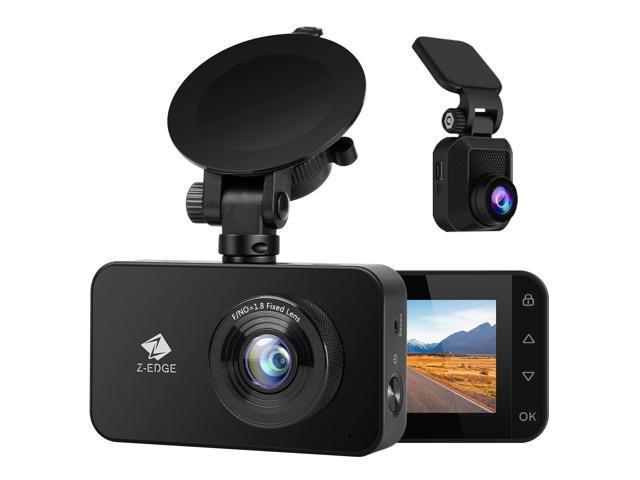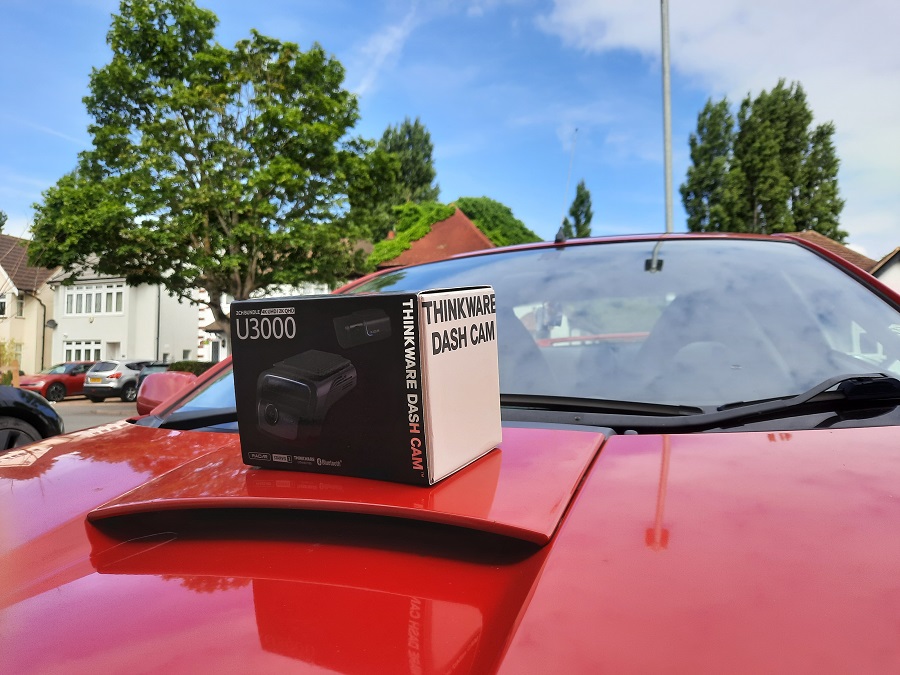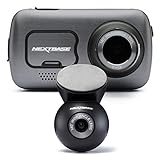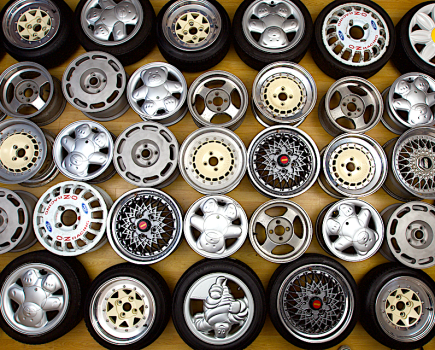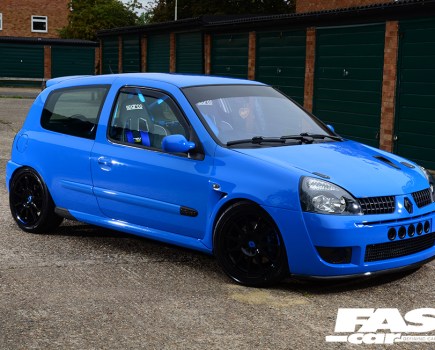No PC? No problem. If you don’t have a computer, you can still get your hands on a great dash cam and still view your footage. Here’s our selection of the best wireless dash cams you can buy.
Even if you think you’ve got the best dash cam already, getting to your recorded footage can be a hassle if it’s a traditional wired model. Not everyone has a computer or even access to one. Even if you do, getting the memory card out of your dash cam is more effort than anyone needs. A wireless dash cam makes life so much simpler.
With built-in Wi-Fi, you can quickly and easily connect your phone to one of these dash cams. From there, you can access your video recordings, download them and share them. This means you can get a dash cam without a screen, which takes up a lot less windscreen real estate. Basically, having a wireless dash cam will just make things that much easier and better. We’ve picked five of the best wireless dash cams that are well-specced but still affordable.
How we chose these products
While not all of the products below have gone through our usual rigorous testing, they have been selected based on a number of features you should expect to find in the best products.
The cameras which have been tested first-hand have been recommended by James, who’s overseen all of the dash cam reviews on our site so far. As such, he’s got a good understanding of which ones are worth your time and money.
How we tested the products
For those which we’ve been able to test first-hand so far, we felt it was important to get a well-rounded view of what ownership with each of these cameras should be like. That meant covering everything from installation, to user ergonomics, and of course product performance. We’ll give you an overview of our findings here, but we’ll also include a link to each individual review so that you can learn about each camera in more detail.
At a glance:
- Garmin Live LTE – RRP: $399.99, buy now. £349.99, buy now.
- Z-Edge Z3D-2K – RRP: $99.99, buy now. £143.99, buy now.
- Thinkware U3000 – RRP: $549.00, buy now. £399.00, buy now.
- Rove R2-4K – RRP: $173.99, buy now. £289.99, buy now.
- Nextbase 622GW – RRP: $399.99, buy now. £269.00, buy now.
- Wireless vs. Wired dashcams
- Benefits of wireless dash cams
Best Wireless Dash Cam In 2023
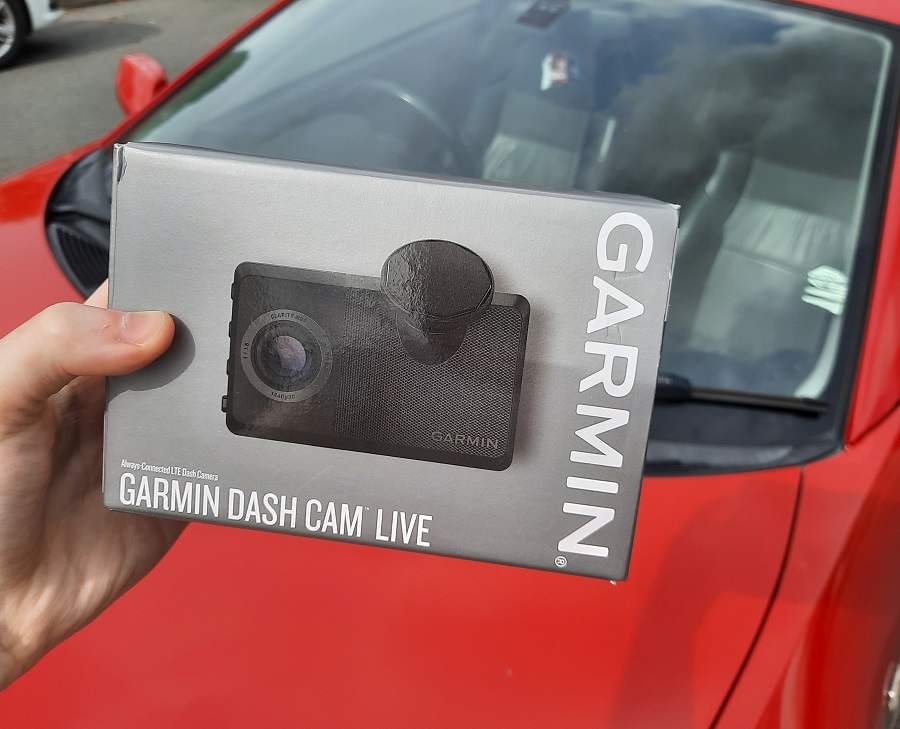
Garmin Dash Cam Live
RRP: $399.99, buy now. £349.99, buy now.
At the moment, the Garmin Dash Cam Live with LTE connectivity (catchy name, eh) is probably the most capable wireless dash cam on the market. Its app not only allows you to remotely access video footage stored on the cloud, but also to view all sorts of data which could be vital in a legal or criminal situation. Speed, location, and time data validates your account when you make a claim or defend yourself in court. Plus, if you hook it up to a constant power source, the Garmin app will let you view a direct feed of the dash cam’s view when you’re away from the car. That remote live video feature could prove to be especially useful in conjunction with live location tracking, should your car ever be stolen.
As for the image quality, the camera records in a resolution of 1440p at 30fps, through a 140-degree angle lens. So overall, the footage you get holds up very well in day and night. There is a catch though. And that’s the subscription fee. Yep, if you want to retain full access to remote live video and vehicle tracking, you’ll need to pay $9.99 per month, or more, depending on which tier of subscription you fancy. To learn more, read the full review here.
We check 1,000s of prices on 1,000s of retailers to get you the lowest new price we can find. Fastcar may get a commission from these offers. Read more here.
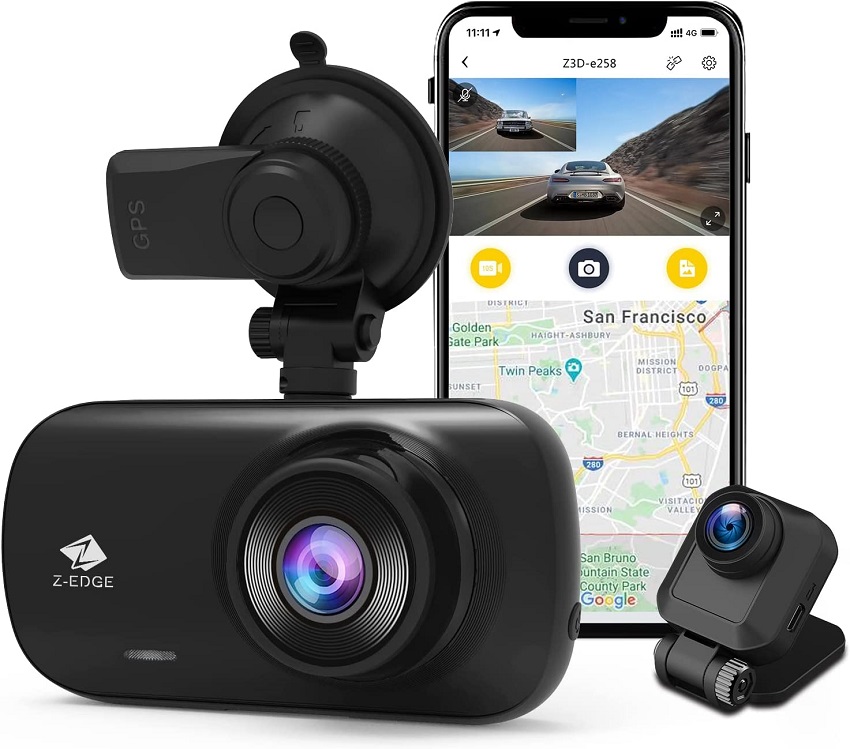
Z-Edge Z3D-2K
RRP: $99.99, buy now. £143.99, buy now.
The Z-Edge Z3D-2K gives you two cameras in one great-value package. The front camera offers 2K 30fps recording with a 155° viewing angle. The rear camera records in 1080p at 30fps and has the same 155° viewing angle. That means you’ve got four lanes of camera coverage front and rear. The Wide Dynamic Range means clear recording in all lighting conditions. Meanwhile, the Superior NTK96670 CPU boosts low-light settings for improved image quality at night. The Z3D-2K also comes with built-in GPS, plus a G-sensor and parking monitor. Packed full of features, the Z3D-2K is an excellent wireless dash cam.
We check 1,000s of prices on 1,000s of retailers to get you the lowest new price we can find. Fastcar may get a commission from these offers. Read more here.
Thinkware U3000
RRP: $549.00, buy now. £399.00, buy now.
The Thinkware U3000 is firmly on the other end of the price spectrum compared to the Z-Edge above. So, what has it got to show for it? Well, the app that comes with the U3000 is pretty cool. As well as being able to remotely access your files, you can also tune into a livestream taken directly from the dash cam when you’re away from your car (assuming you’ve hardwired it, or are feeding it power through the OBD2 port). That means that, like a baby monitor, you can check in on your car at anytime to make sure it’s still where you left it, and isn’t in any sort of peril.
The camera quality is good – it records in 4K Ultra HD ensuring you get a crystal clear image, and if you opt for the rear camera add-on, that’ll record in 2K. If you didn’t like the sound of Garmin’s subscription service, you’ll be glad to know that there are no additional costs with this high-end item. So although you pay a lot up front, that’s *all* you pay. Read the full review to find out more.
We check 1,000s of prices on 1,000s of retailers to get you the lowest new price we can find. Fastcar may get a commission from these offers. Read more here.
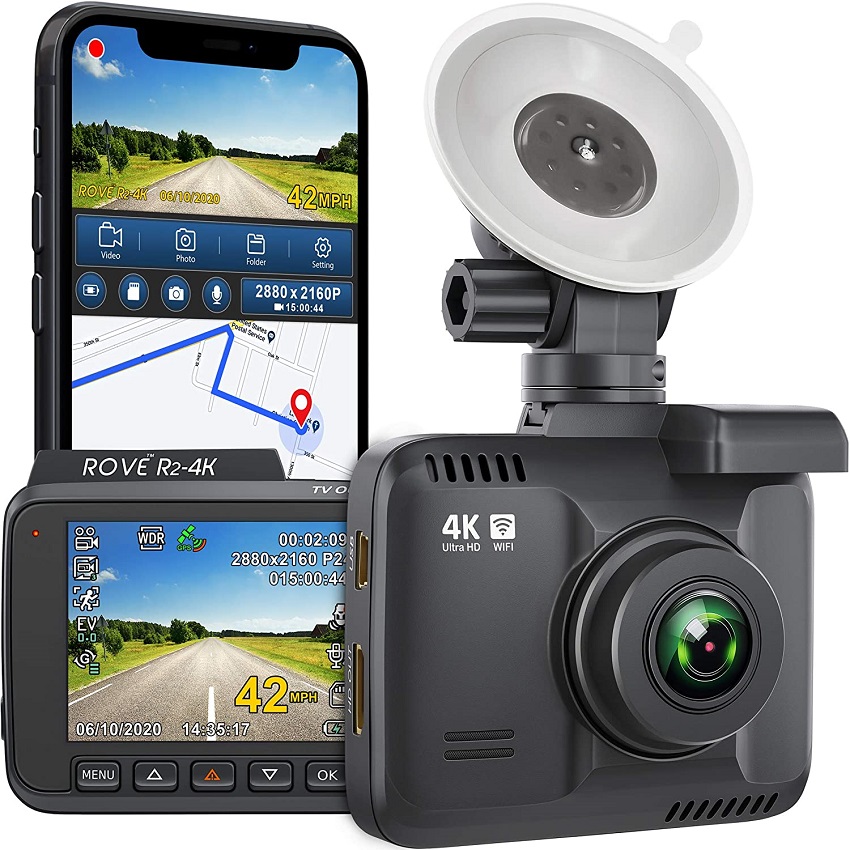
Rove R2-4K
RRP: $173.99, buy now. £289.99, buy now.
With Ultra HD recording, the Rove R2-4K is an impressive piece of kit. You only get one camera, but it records 2880x2160P at 24fps and has a 150° viewing angle. The six-glass lens ensures superb clarity aided by the Wide Dynamic Range. Meanwhile, the combo of NT96660 and Sony IMX335 sensors delivers excellent nighttime recording. There’s also built-in GPS, plus a G-sensor and parking monitor. The Rove R2-4K is a compact wireless dash cam that delivers impressive performance at an excellent price.
We check 1,000s of prices on 1,000s of retailers to get you the lowest new price we can find. Fastcar may get a commission from these offers. Read more here.
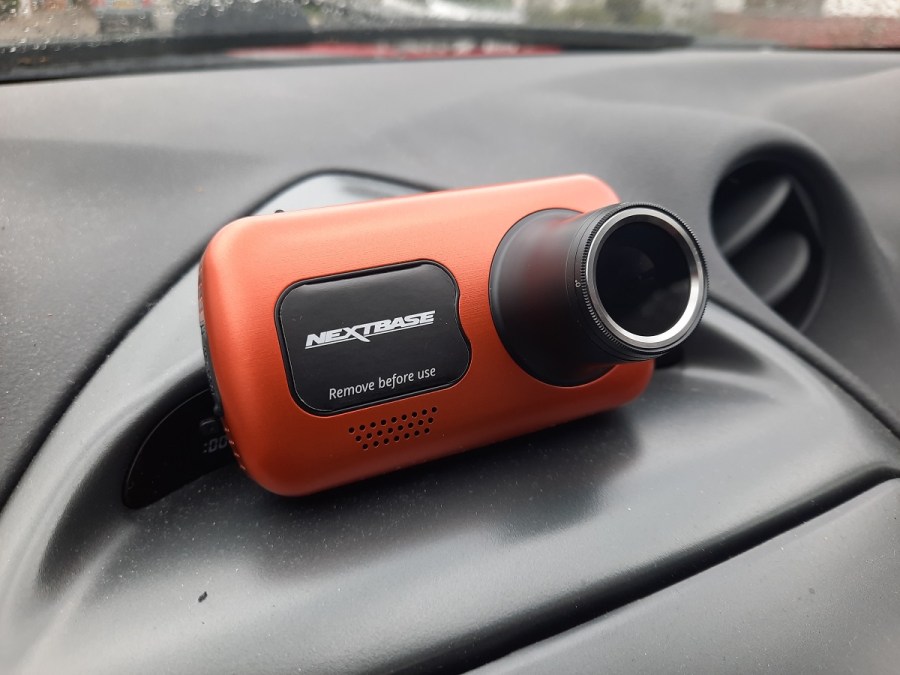
Nextbase 622GW
RRP: $399.99, buy now. £269.00, buy now.
Nextbase dash cams are consistently excellent. The 622GW in particular packs an impressive punch. The camera records 4K at 30fps, but you can turn the resolution down in favor of up to 120fps if you wish. It also has a 140° viewing angle and the 6G glass lens ensures you get crystal-clear video quality. What we really like is the built-in polarizing filter, which reduces glare and reflections. This really improves video clarity in bright conditions, and helps out in urban environments at night too. There’s a 3” touchscreen IPS display, and the powered Click&Go windscreen mount makes attaching and removing the 622GW so easy. There’s GPS, an intelligent parking mode, and an adjustable G-sensor.
What sets the 622GW apart from its rivals, however, are the extra features it offers. There’s Amazon Alexa built-in, which allows you to get directions, play music, check the weather and lots more. There’s also an Emergency SOS function, that will contact the emergency services in case of an accident. It might be more expensive than some of the lesser-known brands, but the 622GW makes up for it in lots of ways. This is a very impressive wireless dash cam that doesn’t disappoint. Check out our in-depth review of it to learn more.
We check 1,000s of prices on 1,000s of retailers to get you the lowest new price we can find. Fastcar may get a commission from these offers. Read more here.
Wired vs Wireless dash cams
If you’re unsure what the difference between a traditional wired and wireless dash cam, we’re here to help. Technically speaking, no matter what dash cam you opt for, it will most likely need powering by a wired connection. Without a wired power connection, a internal battery would only be able to record a limited amount of footage without running out of power. The “wireless” part is referring to how the footage is stored. There are two methods here:
- Store the footage locally on a memory card
- Upload footage automatically to a cloud storage service
If the dash cam only supports storage locally on a memory card, then this would be considered a wired dash cam. You need to plug the dash cam into a PC in order to obtain your footage. If the latter option, whereby footage is upload to the cloud, this becomes a wireless dash cam, as you don’t need to connect your dash to a PC via a data transfer cable. It’s important to note that a dash cam can feature both, the ability to store locally on a memory card as well as provide a backup on a cloud service for the best of both worlds.
What are the benefits of a wireless or internet-connected dash cam?
The first, and arguably most important, is that you can access footage in real-time. This means that if you’re involved in a collision, you can quickly access your footage for evidence should you need it. Often, dash cams can detect rapid deceleration in the event of a collision instantly and upload a period of footage to the cloud without you needing to do a thing.
The second benefit is that the footage uploaded to the cloud is saved securely in one area, meaning you don’t have to search around for the memory card, or a device to connect to the dash cam. It also means that older footage of an incident can be accessed quickly and securely should you need the footage as evidence. Often, the cloud databases are encrypted, meaning you and only you can access the footage.
And finally, a wireless dash cam has much greater storage capability. While a wired dash cam is limited to the physical space on a memory card (or set up to overwrite older footage automatically), a wireless dashcam is only limited to the cloud storage available, which is usually multiple GBs of footage. It also means you don’t have to compromise on camera quality. While you might be encouraged to only record at 720p on your wired dash cam to save space on your memory card, a cloud service allows you to record in full HD or even 2K/4K resolution to ensure the truest picture is painted.
Words by Elizabeth de Latour and James Bowers.
Love cars? We’re putting on a whole host of modified car fun this summer with our premier events. Be sure not to miss out. Visit our events page for more information.

